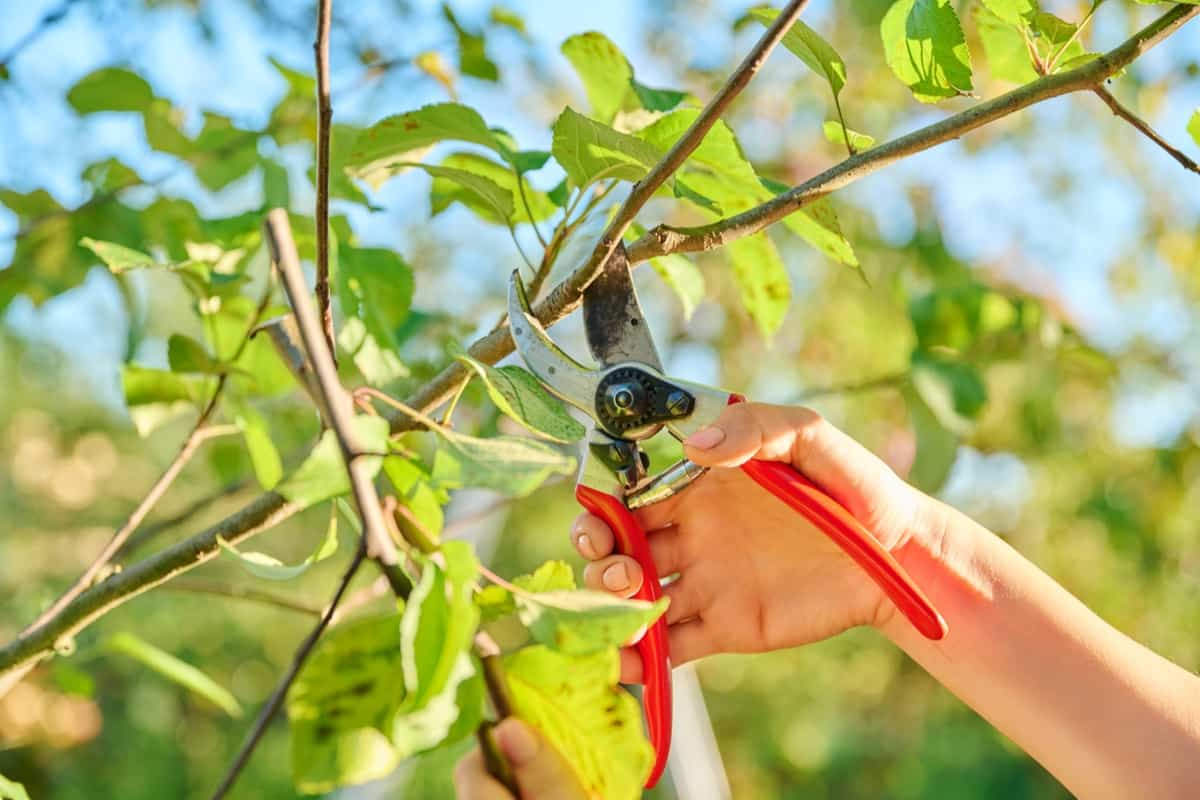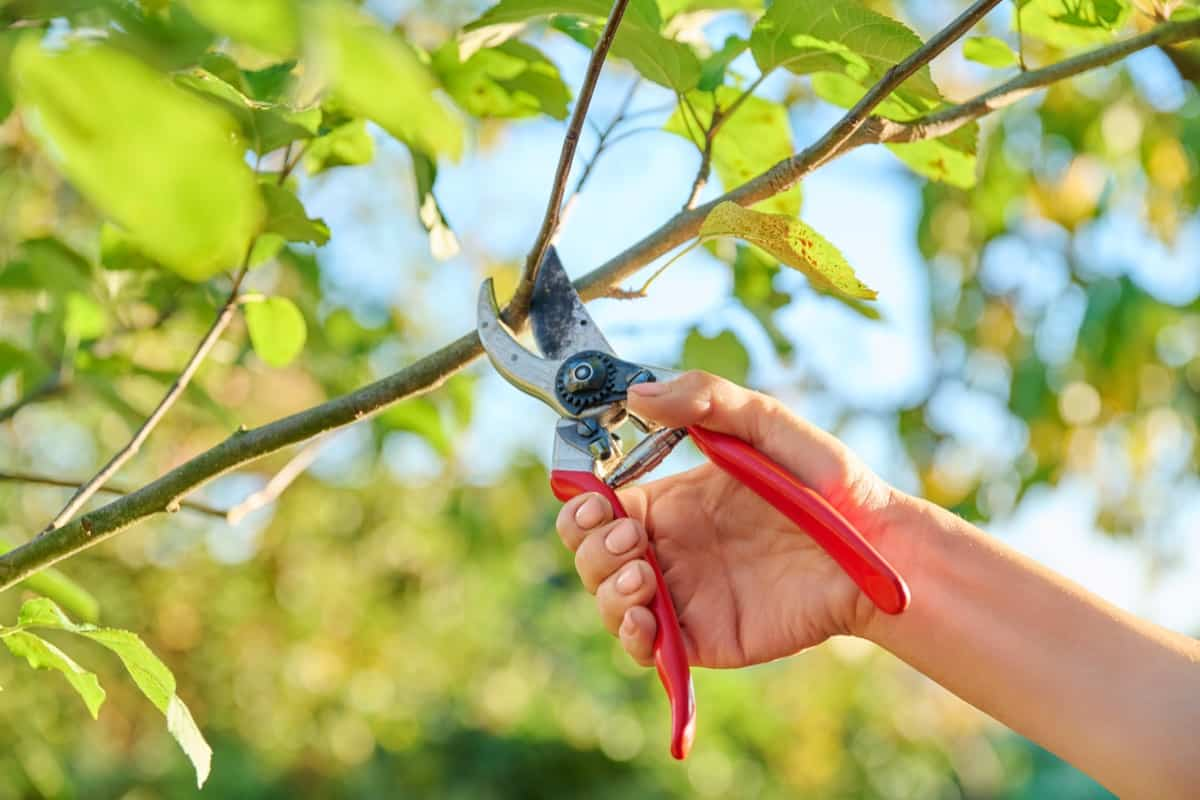Apple tree cultivation in Washington State has become synonymous with American apple production, the nation’s premier apple producer. But what’s the secret behind these bountiful harvests? A significant aspect is the meticulous care and timely pruning of these trees. This article delves into comprehending the ideal timings, schedules, and prime moments for trimming apple trees in Washington State.

As the age-old question goes: How do you prune an apple tree in Washington state? We’ll provide answers, focusing on the timing of this crucial agricultural task. Also, it’s essential to note that sometimes, it can be too late to prune fruit trees, and we will touch upon this aspect as well.
When to Prune Apple Trees in Washington State
Best Time to Prune Apple Trees in Washington State
Apple trees are resilient and robust. However, pruning them at the right time ensures they remain productive and healthy. In Washington State, the ideal period for apple tree pruning is late winter, between February and early March. This timing is strategic. By pruning in late winter, you allow the tree to direct its energy toward the fresh growth of spring. During this period, trees are dormant, reducing the risk of transmitting diseases.
Moreover, the tree’s structure is visible without leaves, making it easier to spot any problematic branches or areas that need attention. If you were wondering when it is too late to prune fruit trees, pruning in late spring or summer might stress the tree, making it more susceptible to diseases or reducing its fruit yield.
Pruning Schedule for Apple Trees in Washington State
When devising a pruning schedule for apple trees in Washington State, it’s essential to consider the tree’s age and health. For younger apple trees, particularly those aged one to three years, annual pruning helps shape the tree, ensuring it grows strong and maintains a balanced structure. These early years of pruning focus on establishing a robust central leader (the main vertical branch) and fostering a framework for fruitful branches.
As apple trees mature, the pruning schedule may shift to every other year, particularly for healthy trees with no signs of disease or structural imbalance. However, due to varying climate conditions across different regions in Washington State, it’s advisable to assess your tree’s health annually. If your tree has been attacked by pests or shows signs of disease, a more frequent pruning schedule may be necessary.
In case you missed it: When to Prune Apple Trees in Michigan: for Winter, Spring, Fall, and Summer Season

Optimal Timing for Apple Tree Pruning in Washington State
The optimal timing for apple tree pruning doesn’t solely revolve around a specific month or season. It also accounts for various external and tree-specific factors. For instance, pruning on a clear, dry day is preferable, as wet conditions can make trees more vulnerable to fungal diseases. The tree’s dormancy is another pivotal factor. Pruning during dormancy, especially in late winter, ensures that fresh cuts heal faster with the onset of spring, mitigating the risk of infections.
A pro tip: If you’re uncertain about the tree’s dormancy, check the buds. Dormant trees have tight, unopened buds. Another factor to bear in mind is the potential for frost. In regions of Washington State prone to late frosts, delay pruning a little longer to avoid frost damage to new growth that the tree pushes out post-pruning.
Recommended Period for Pruning Apple Trees in Washington State
While late winter emerges as a consensus for the best time to prune, the recommended period for pruning apple trees in Washington State ranges from late January to early April. Starting too early in January might expose fresh cuts to extreme cold, which could harm the tree. On the other hand, waiting until April might coincide with budding, leading to potential damage to the tree’s nascent growth.
Given Washington State’s varied topography, microclimates can impact this recommended period. For example, colder regions might require a slight delay in pruning to avoid late frost damage, while warmer areas could see earlier pruning. Keeping a close watch on local weather patterns and understanding your specific region’s climate nuances is crucial during this period.
Timing Guidelines for Apple Tree Pruning in Washington State
Late winter, between February and early March, is the prime window for this task, as the trees remain dormant. This period minimizes the risk of disease transmission, given that trees are without their foliage, making the structure more visible and accessible. If you’re pruning outside this window, it’s vital to do so on clear, dry days, as damp conditions can invite fungal infections. Annual pruning is paramount for those with young apple trees between 1-3 years old to shape the tree and ensure its structural integrity.
If healthy and free from disease, mature trees can shift to an every-other-year pruning routine. Notably, late April and beyond might not be the best time to prune, as this period could stress trees during their active growth phase. Always be cognizant of potential frost, especially in regions prone to late frosts, and adjust your pruning schedule accordingly.
In case you missed it: How to Identify and Treat Apple Maggot in Northwest: Prevention and Solution

Seasonal Pruning Recommendations for Apple Trees in Washington State
Late winter, primarily January to early April, stands out as the preferred timeframe because trees are dormant, and the risks of disease and pest infestations are reduced. During springtime, it’s ideal to focus on maintaining tree health by pruning only dead or diseased branches. Summer pruning, done lightly, can direct and control growth, allowing sunlight to penetrate the canopy, which aids in fruit ripening.
However, summer pruning should be minimal, focusing mainly on removing water sprouts or overly vigorous branches that can sap the tree’s energy. Come autumn; it’s advisable to avoid pruning altogether, as cuts made during this time might not heal before the cold sets in, leaving trees vulnerable.
Pruning Tips for Apple Trees in Washington State
When embarking on this task in Washington State, always begin by sterilizing your pruning tools to prevent the spread of diseases. Sharp tools ensure clean cuts, promoting faster healing. Focus on the tree’s structure, aiming to maintain a central leader (the main upward branch) and a balanced framework of branches.
Removing any crossing, diseased, or damaged branches is paramount. When you make cuts, always do so at a 45-degree angle, ensuring that water runs off and doesn’t settle on the cut, which could invite disease. Prune crowded parts of the tree to enable sunlight and air movement, encouraging improved growth and more fruitful development. Lastly, after each pruning session, clean up and dispose of the cut branches and debris, as these can harbor diseases or pests that might affect the tree in subsequent seasons.
In case you missed it: How to Treat Brown Spots on Apple Tree Leaves Naturally: Causes, Fix with Effective Organic Home Remedies

Conclusion
Timely and proper pruning is pivotal in ensuring the health and productivity of apple trees in Washington State. Understanding the nuances of when and how to prune is crucial for both novice gardeners and seasoned orchard owners alike. By adhering to the recommended timing guidelines, you can ensure your apple trees continue to thrive and produce bountiful harvests year after year.
- Feed Your Flock for Less: Top 10 Tips to Save on Chicken Feed
- Ultimate Guide to Ossabaw Island Hog: Breeding, Raising, Diet, and Care
- Hatching Answers: The Top 10 Reasons Your Chickens Aren’t Laying Eggs
- Eggs and Economics: Breaking Down the Cost of Raising Backyard Chickens
- Defend Your Greens: Proven Methods to Keep Iguanas Out of Your Garden
- Ultimate Guide to Cinnamon Queen Chicken: A Comprehensive Guide for Beginners
- Ultimate Guide to California Tan Chicken: Breeding, Raising, Diet, Egg-Production and Care
- Ultimate Guide to Marsh Daisy Chicken: Breeding, Raising, Diet, and Care
- 10 Types of Chicken Farming Businesses You Can Start for Profits